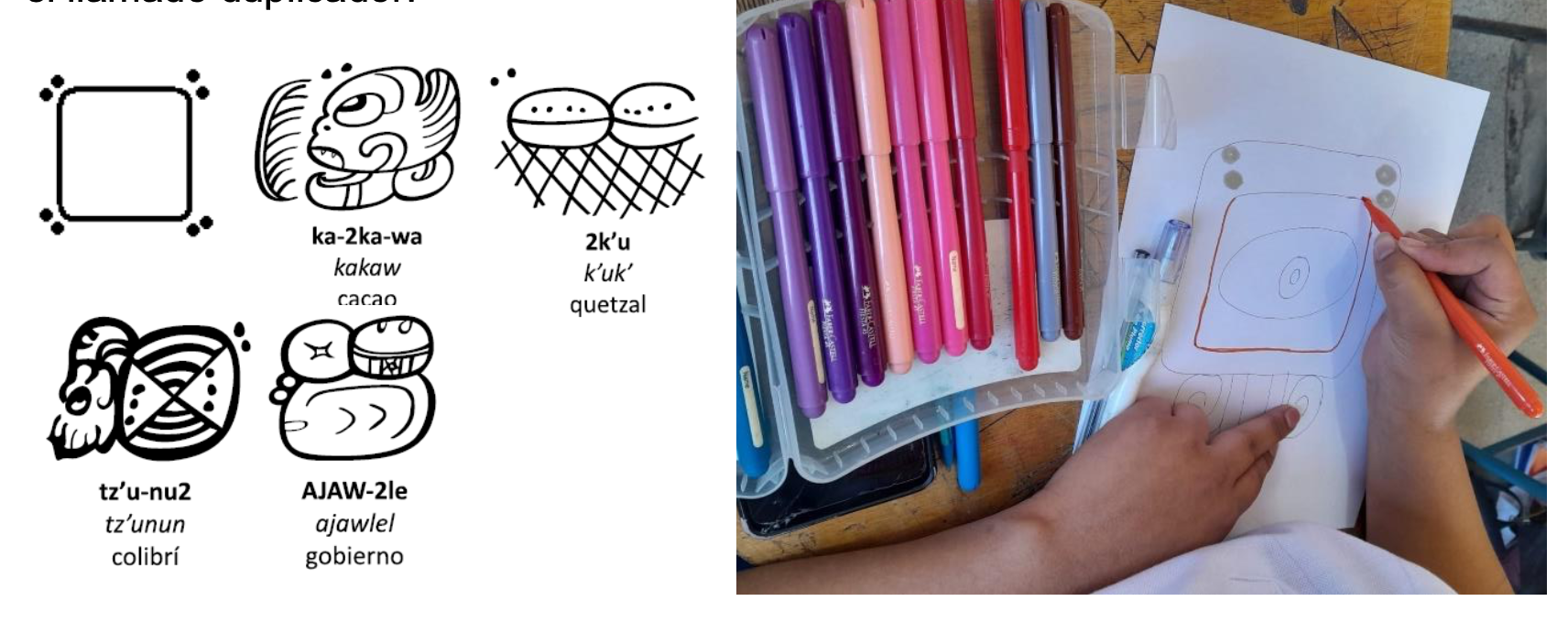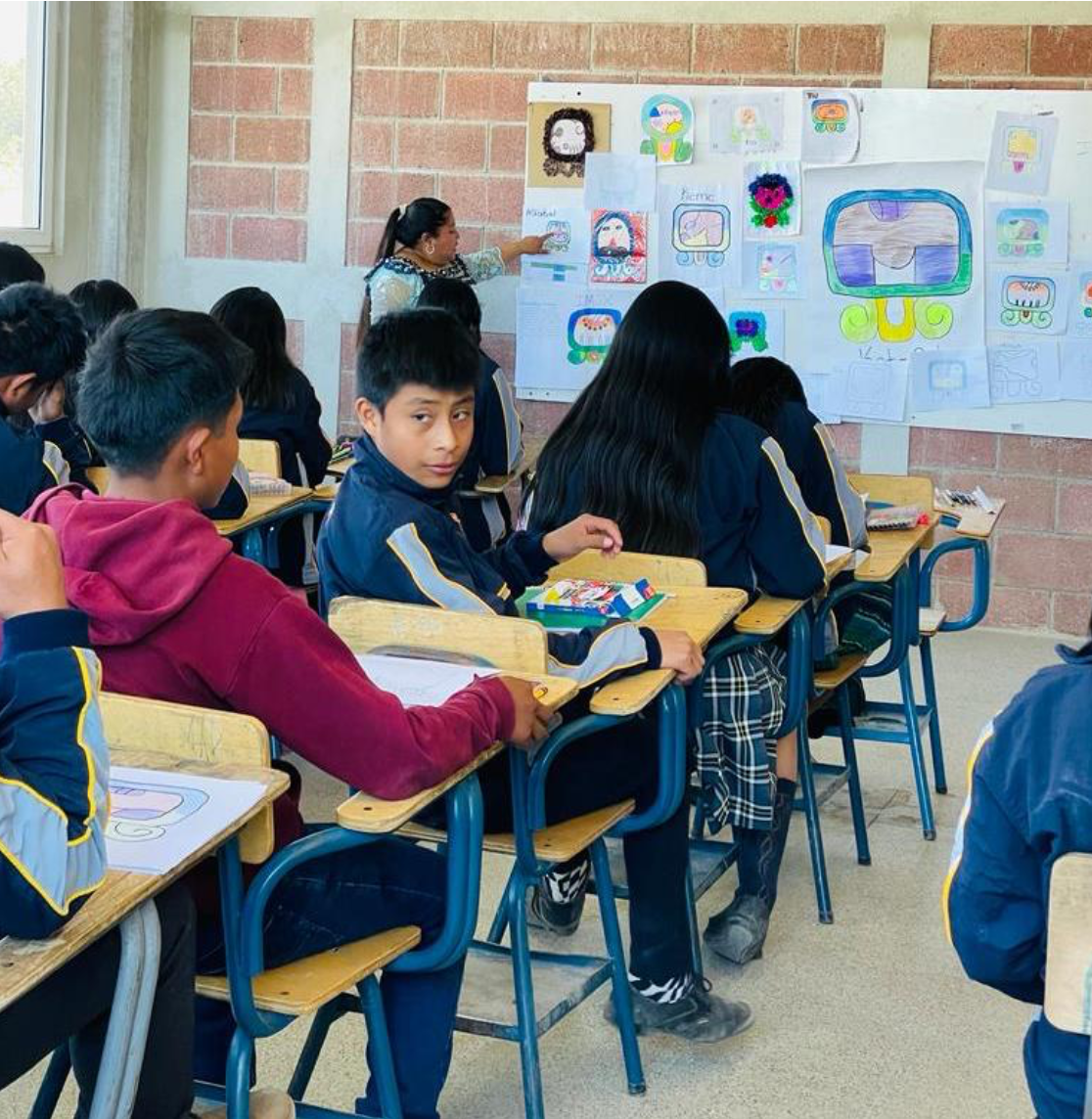Marta Cux Yac posts students’ work in Santa Lucía Utatlán
on February 17, 2024
9 Ajaw 8 Kumk’u (March 13, 2024)
Writing As Ancestral Knowledge:
Creating New Maya Writers in Santa Lucía Utatlán
Today is the Haab’ anniversary of the famous Long Count Era base date, often referred to as a day of creation, when the three hearthstones were renewed. It is currently our Spring Break, and I write this from Jaibalito, on the northern shore of Lake Atitlán, with jubilant music playing in the village, and Kaqchikel voices singing. This month, we hear from Marta Cux about her introductory workshop last month for 40 K’iche’ students from Santa Lucía Utatlán, just a few miles north of where I sit in Jaibalito. As many of you know, there are three main Mayan languages spoken around the lake—Kaqchikel, Tz’utujil, and K’iche’.
We hope you enjoy Marta’s report, and that you can witness the enthusiasm of her young students as they explore the Maya writing system and how it can now be used to write in K’iche’.
Sib’alaj Maltiyox,
Michael Grofe, President
MAM
Writing as Ancestral Knowledge
Workshop on the Mayan writing system as an introduction to Maya epigraphy for young people from the Municipality of Santa Lucía Utatlán, Sololá, for the recovery of ancestral practices.
Date: February 10 and 17, 2024
Location: Solón Tecnológico, Santa Lucía Utatlán, Sololá
Facilitator: Marta Dominga Cux Yac
Participants: 28 women 12 men Total 40. Students and participants
Ethnic/Indigenous Origin: Kiche’ and Spanish
Geographic Location: Santa Lucía Utatlán, Sololá. Country. Guatemala
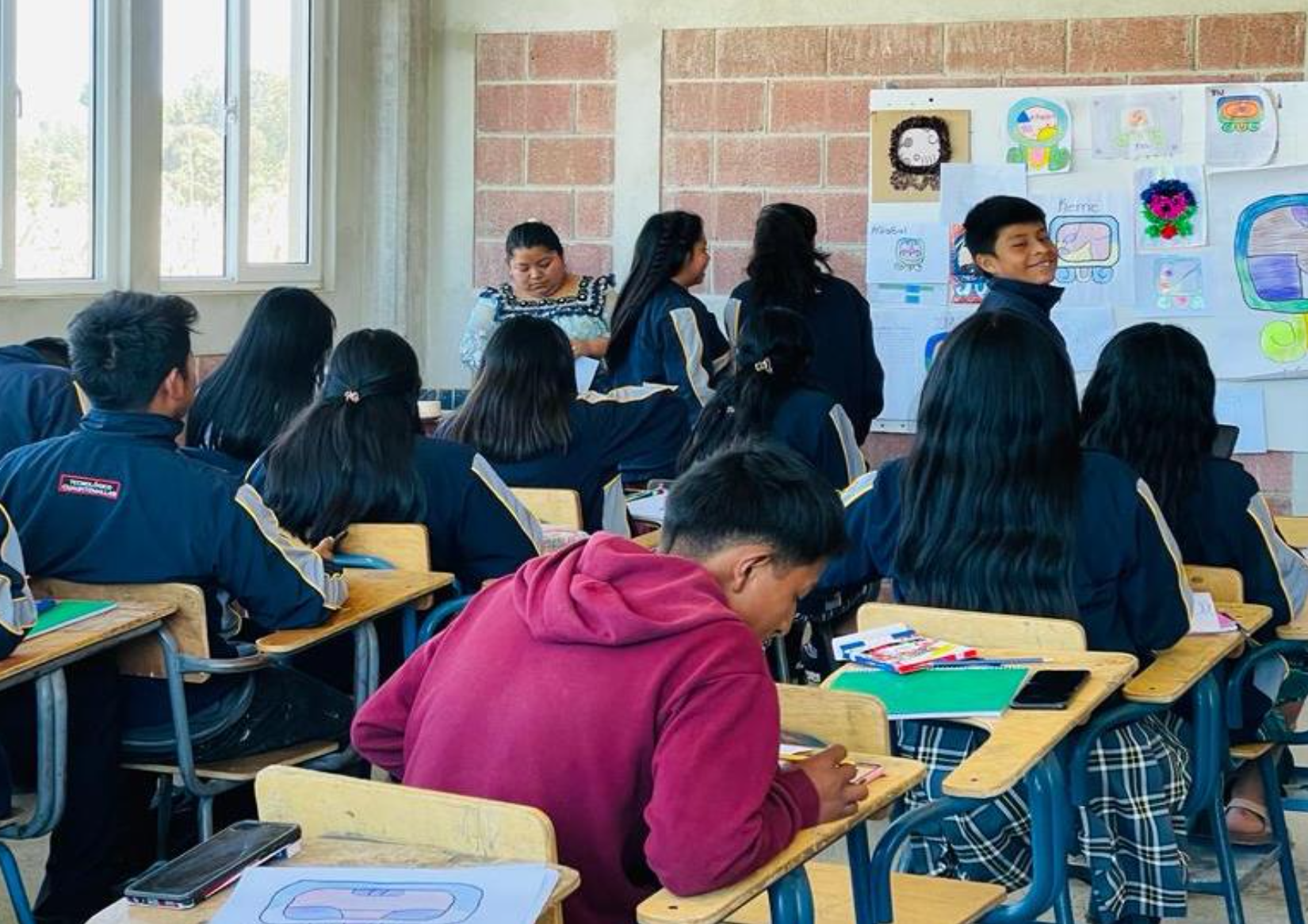
Students share their work in Santa Lucía Utatlán
on February 17, 2024
All young people from different communities and ages were welcomed in the first workshop and the project to teach reading and writing the ancient writing system, Ojer Maya’ Tz’ib’, was announced to students and members of K’iche’-speaking Mayan communities. The purpose was to generate awareness and critical thinking by knowing our reality in the past, present, and future. In this way, ancestral knowledge about the Mayan writing system is strengthened as an introduction to Mayan epigraphy for young people from the municipality of Santa Lucía Utatlán, in Santa Lucía Utatlán Sololá.
Objective and Scope
Deepen the knowledge of historical memory to identify our identity as young K’iche’ women and men, thereby strengthening and contributing to the learning and rescue of writing as ancestral knowledge in the K’iche’ Maya region of western Guatemala. Young people of different ages are trained to enrich knowledge through this writing.
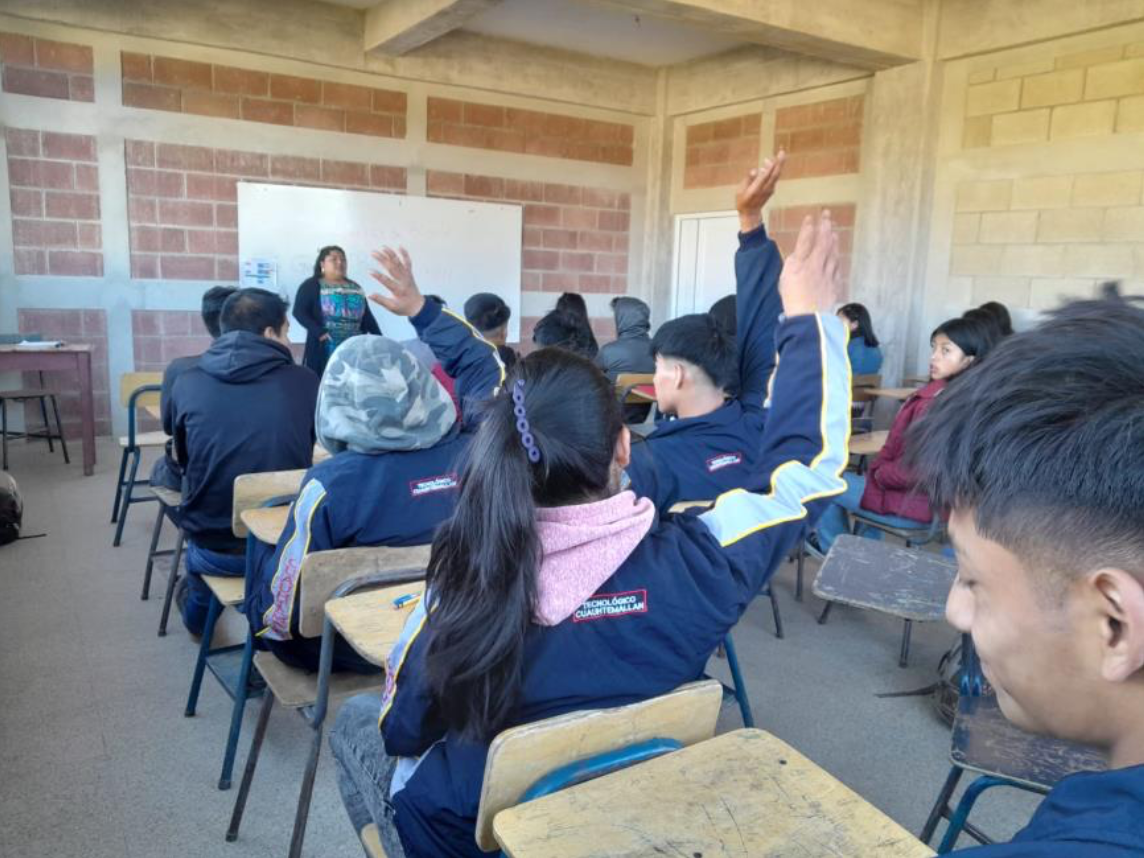
Students respond to questions in the workshop
on February 10, 2024
Workshop Development
There was a large demand for participation, so two workshops were proposed on the dates of February 10 and 17, in which the participants were of different ages and from different communities, so some were students from schools and young leaders in the communities. Within the activities there were presentations, coexistence, learning, practice, writing, drawing, and homework. At the same time, there was satisfaction since the participants requested more workshops, mainly the students, explaining that within the study curriculum there is no course where feedback can be given. Therefore, at the request of the young people to follow up on these processes, the importance of the aj tz’iib’ found in the codices was then discussed. The aj tz’iib’, as it is currently called, is the person who writes, the writer, or the person who was anciently dedicated to the reproduction of the tz’iib’ system on different types of materials and techniques. In ancient times they could also take a specific name aj uxul “the carver”, aj b’ik’il “engraver”, aj wohol “he of the signs”. In continuity, we worked with local currency, identifying writing from the codices.
Workshop February 10, 2024
The Participants learned about the use of the alphabet. They were signs that represent sounds without meaning, such as vowels (v), consonants (c) and syllables (cv, vc, or cvc), which are therefore called syllabograms (Velázquez. 2011).
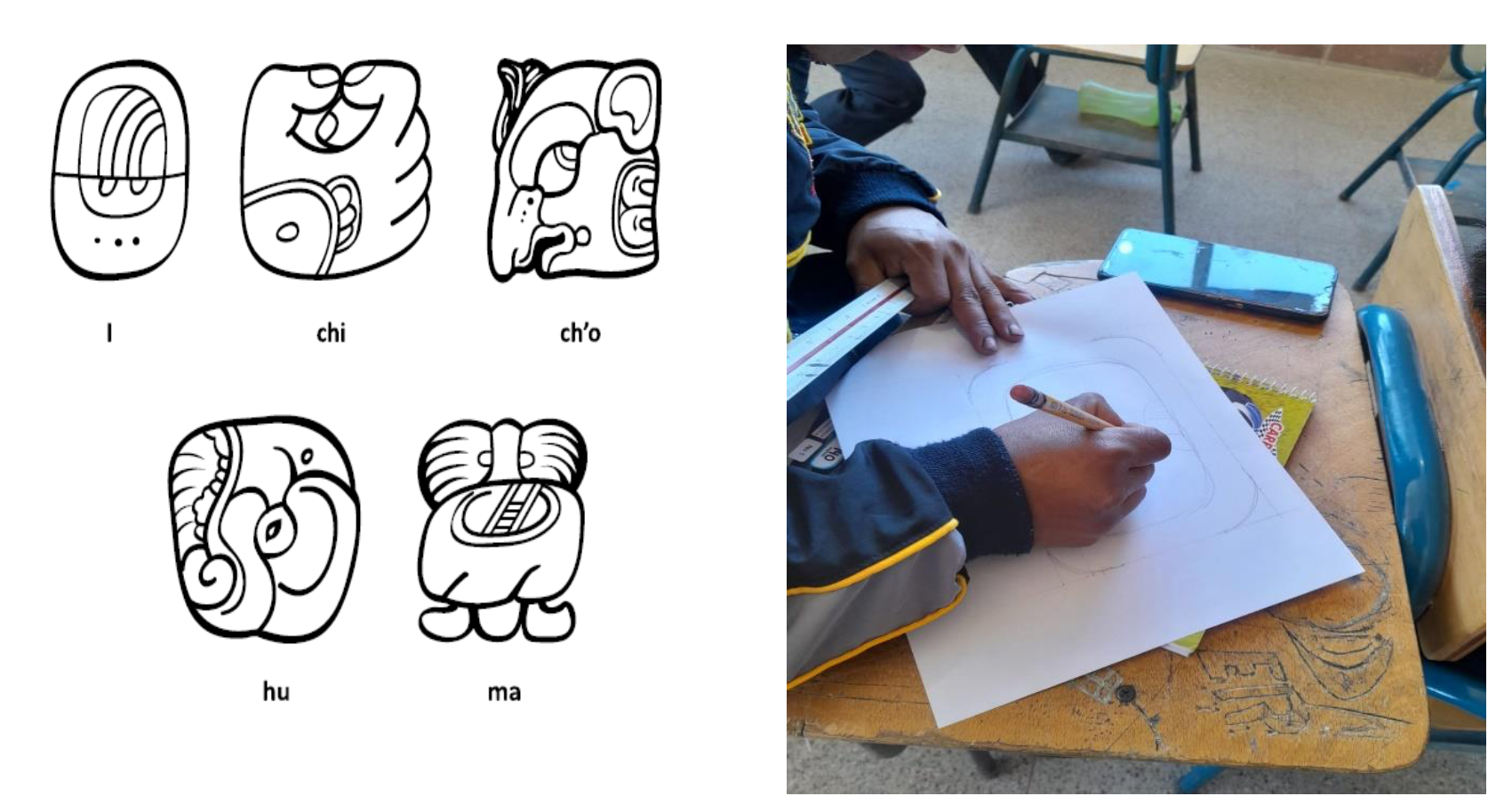
Drawing a day sign
The auxiliary Signs were projected to those to which they are intended to help the process of writing or reading other signs. A diacritic, the so-called duplicator, has been identified in Mayan writing.

Experimenting with a duplicator
We proceeded to draw and structure and how the words are organized by means of a group of signs in a “quadrangular” space. The signs that occupy the most space are called “main signs.” Those that take up less space (normally half of a main sign) are called” affixes” (prefixes, suprafixes, subfixes, postfixes or infixes).
Workshop February 17, 2024
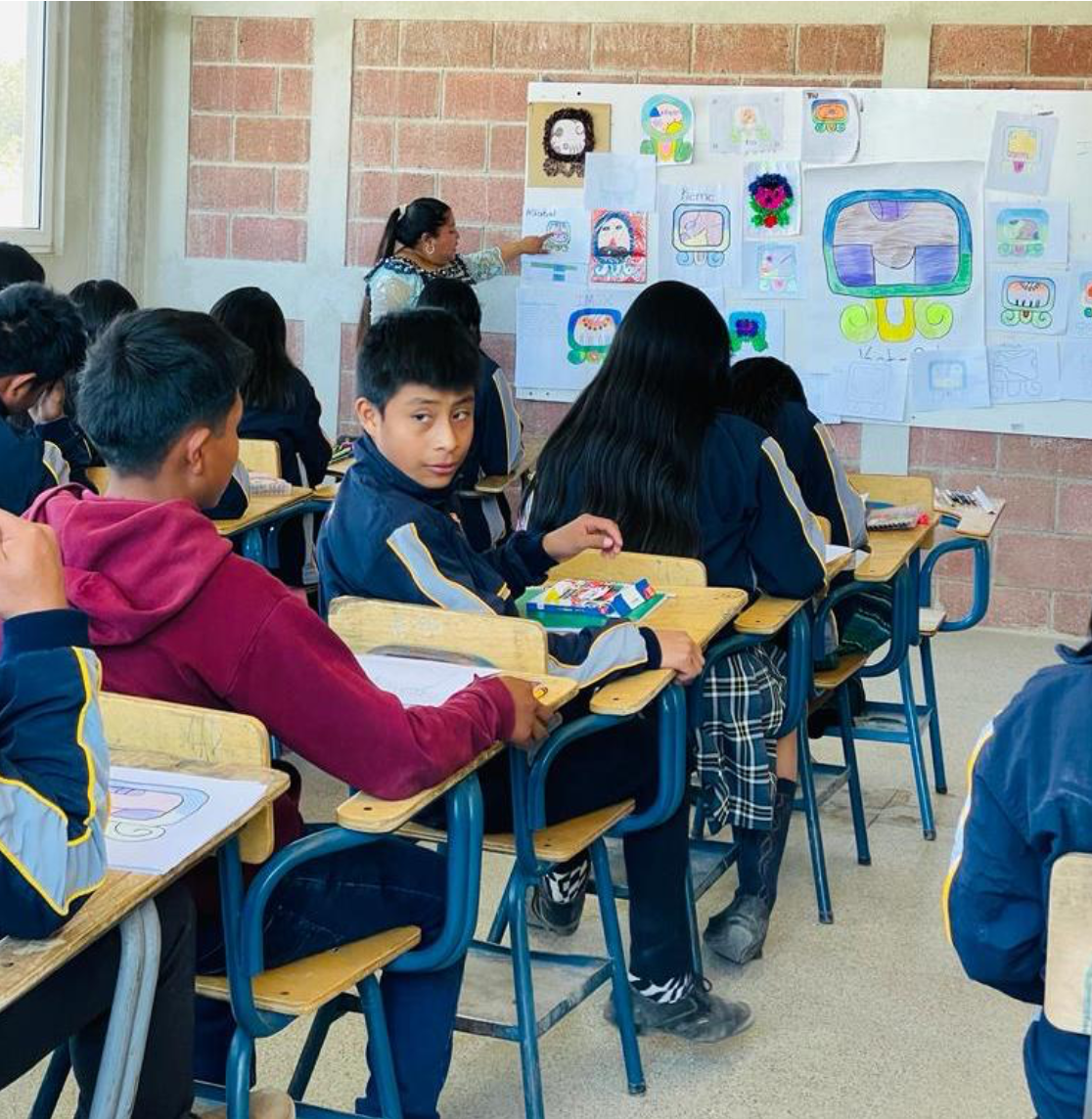
Students discuss their contributions
on February 17, 2024
Structure of a word
The words that end in a consonant (-C), have their syllabograms end in a vowel (CV). The scribes determined, by convention, that the vowel of the phonetic complement or the last syllabic glyph should be ignored during reading.
This learning process contributes to building to a change in which ancestral knowledge about the study of Mayan hieroglyphic writing can be rescued. In this territory, it is a new system that is being implemented thanks to the contribution of Mayas for Ancient Mayan / Maya Antiguo para los Mayas (MAM). It is a change that has occurred for these generations, in which some of them have been surprised about writing and are committed to continuing practicing with the materials provided.
Marta Dominga Cux Yac
Santa Lucía Utatlán, Guatemala


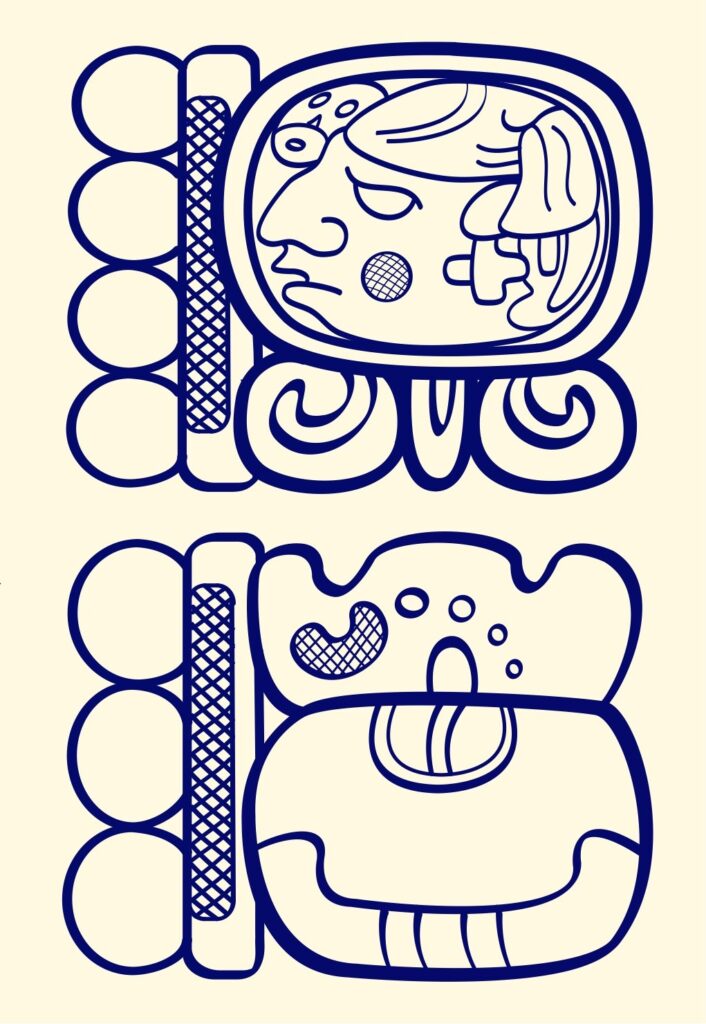
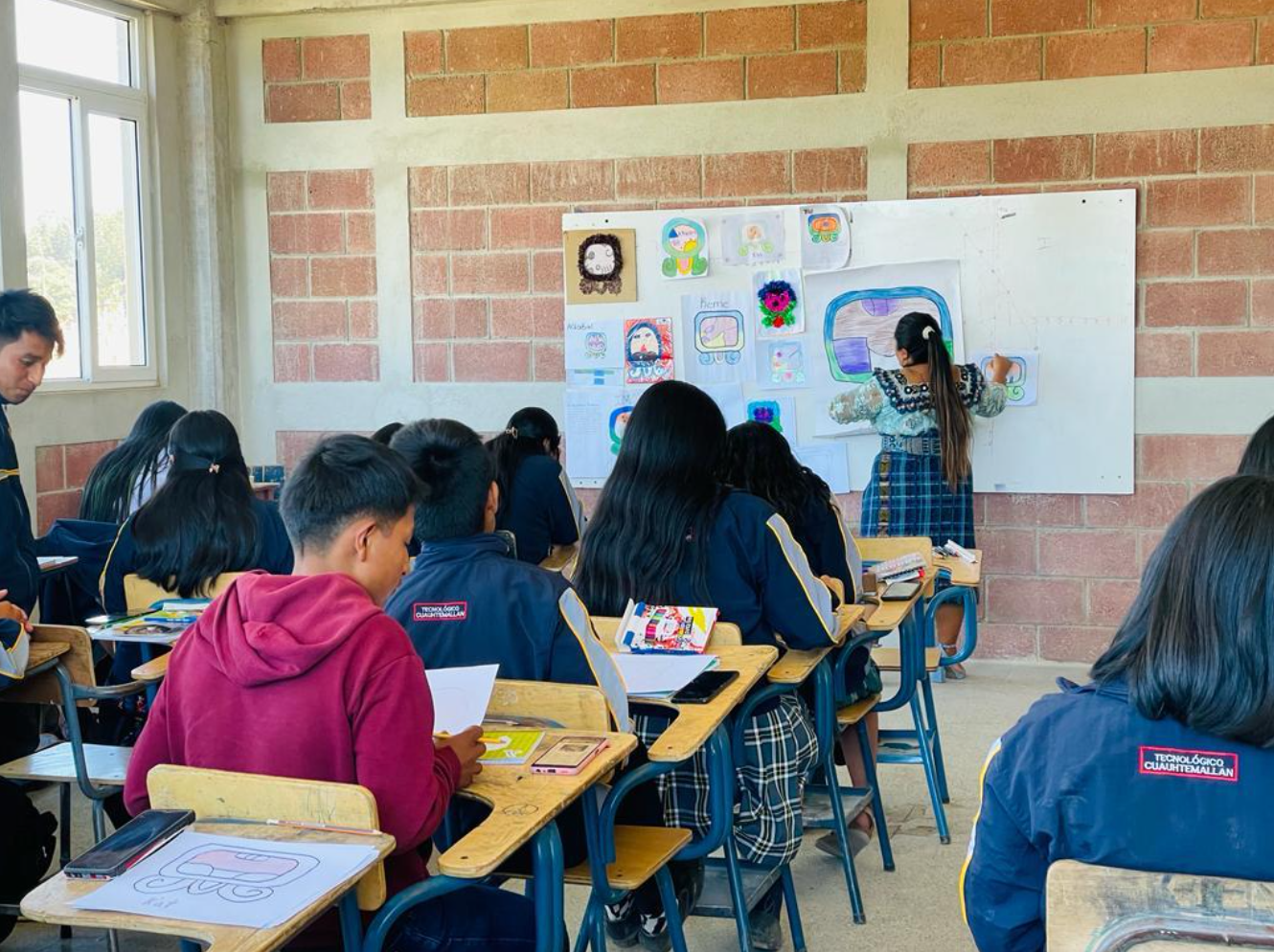

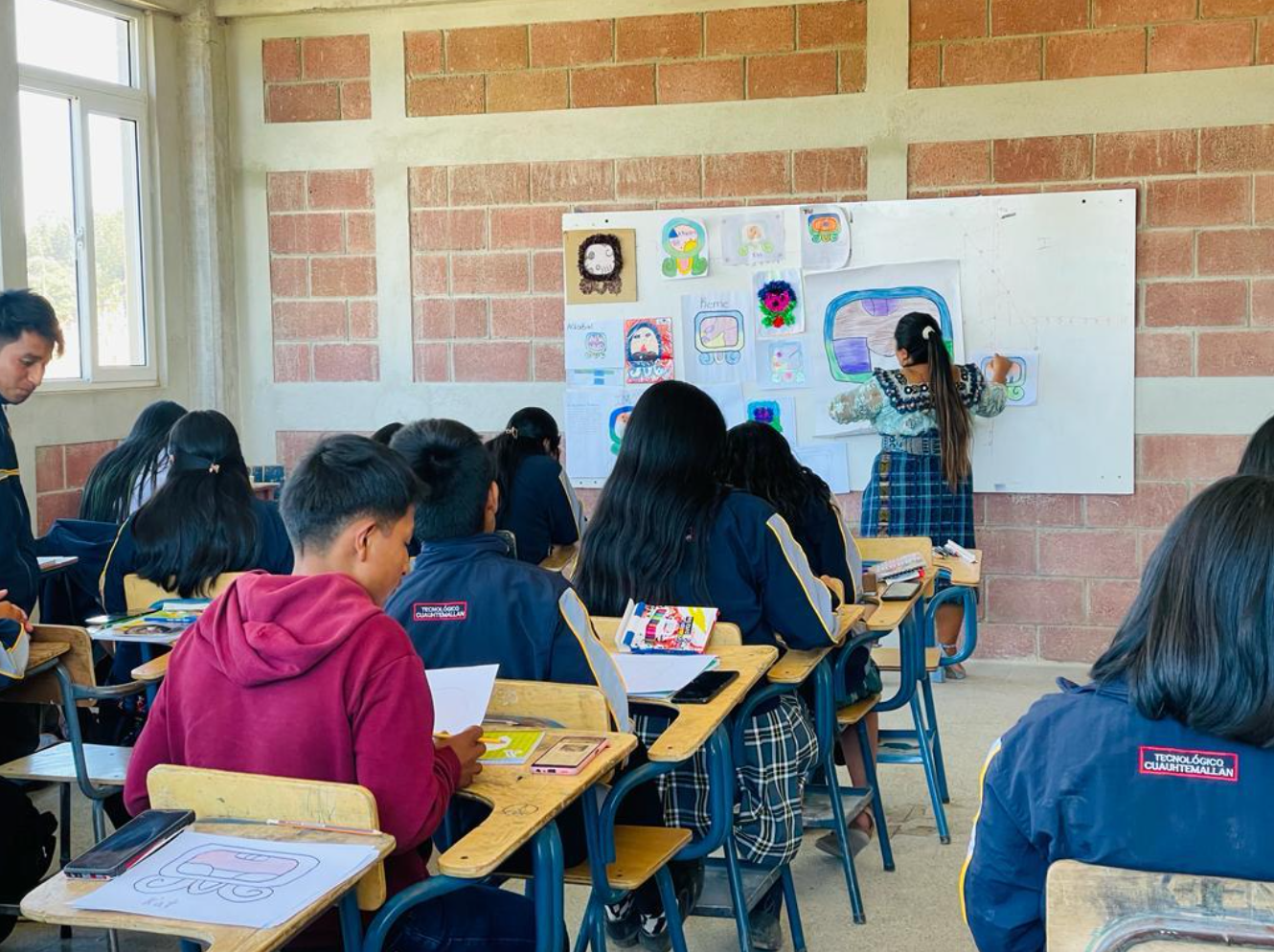

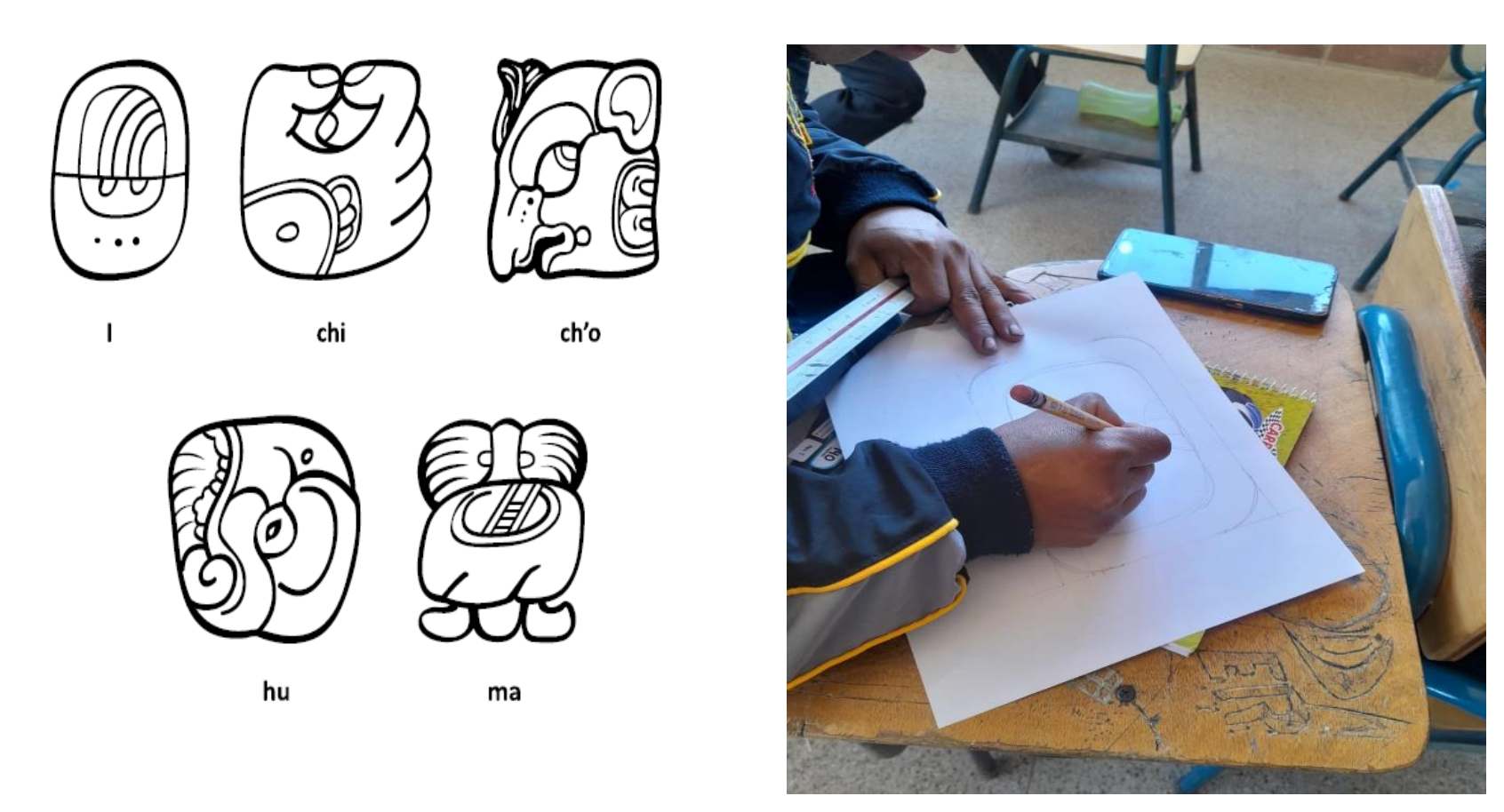 Dibujando un signo de día.
Dibujando un signo de día.